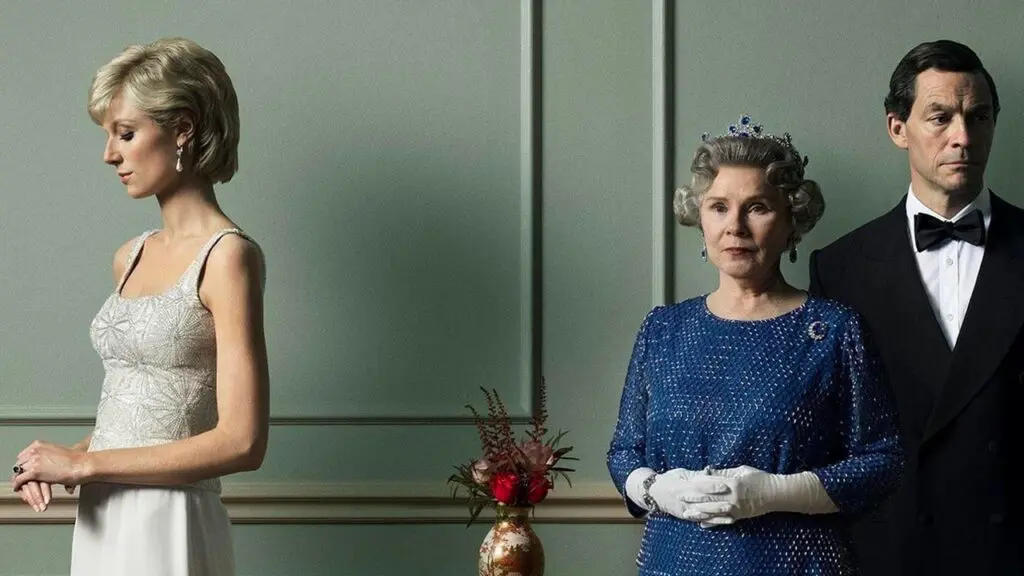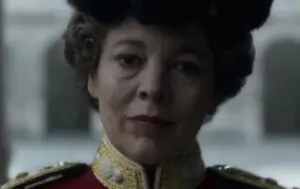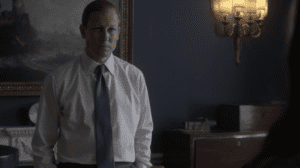The Crown Season 5 delves into more history that is fresh in people’s minds – partially because it happened not that long ago, partially because of recent news around the Royal Family itself. As the series creeps towards the present day, it becomes even more divisive as people’s personal opinions about Queen Elizabeth II, Princess Diana, Prince Charles, and the rest of the family color their perception of the series.
The years covered in season 5, 1991 to 1997, were filled with drama for the Royal Family, giving The Crown plenty of material to work with. Articles from Radio Times and The Telegraph have examined what fact is and what is fiction in each episode. Looking at the season as a whole, it’s clear that liberties were taken, but the plot stays close to the truth.
One of the biggest leaps from known fact occurs in the first episode as Prince Charles reacts to a poll in The Sunday Times that suggests that the public believes the Queen is irrelevant by talking to Prime Minister John Major about suggesting the Queen abdicates early in favor of her son. Major himself has condemned this as “a barrel-load of malicious nonsense,” and the actual article in The Sunday Times found that nine out of ten people felt favorably towards the Queen.
Another character introduced in the first episode is Leonora Knatchbull, the daughter of Norton and Penelope, the Lord and Lady Romsey. She is shown as being in remission from cancer treatment, though her cancer returns, and she passes away in the second episode. What is shown about Leonora is true; she was Diana’s goddaughter.
This plot line also leads to the friendship between Prince Philip and Penelope Knatchbull, who, in reality, were close friends and fellow carriage-driving fans. However, the suggestion that anything more than friendship may have occurred between them or that Elizabeth felt threatened by their closeness is likely entirely fictional. Penelope was a friend of the whole family and was even one of the few guests allowed at Prince Philip’s funeral due to COVID precautions.
Episode 2 depicts Diana working with Andrew Morton on his book Diana: Her True Story, In Her Own Words, which was really drawn from tape-recorded statements given to Morton by Dr. James Colthurst. This much is certainly true, though the depiction of both Morton and Colthurst being threatened during the writing of the book is not.
Princess Margaret and Peter Townsend likely did reunite before his death, as seen in Episode 4, though nearly all of the details in the series’s depiction are incorrect. Margaret appeared on Desert Island Discs in 1981, not 1992, and “Smile” was not one of her chosen songs. She likely reunited with Peter as early as 1978 and perhaps again in 1992, though neither of these meetings has been confirmed.
A fire struck at Windsor Castle in 1992, Elizabeth’s “annus horribilis.” It started in the Queen’s Private Chapel, likely by a faulty spotlight, and quickly spread across much of the castle. The Royal Family, staff, and firefighters worked to save the paintings and antiquities housed in the castle, only losing a few precious items. The fire lasted for 15 hours, and it took five years for the restoration of the castle to be completed.
One of the parts of The Crown that seems almost too strange to be based in fact actually is. Episode 5’s depiction of “Tampongate,” as it came to be called, is largely realistic. The conversation was stumbled upon, recorded, and sold to the papers, much to the humiliation of the Royal Family. While we cannot know the private reactions of Philip or Anne or the Prime Minister, those shown on the Crown feel in line with what one would expect.
What does this mean for the Royal Family?
Ahead of Season 5’s release, there has been increased discussion around the show being a fictionalized account of what occurred rather than steeped entirely in fact. Of course, any show like this requires a certain amount of fictionalization: we will never know the exact conversations that took place between people, nor how members of the Royal Family felt about events. And any depiction of real events in media is sure to take liberties for the sake of being concise and not losing the viewer in minute details.
Actress Judi Dench wrote an open letter in The Times asking for a disclaimer to be added to episodes of the show and calling the show “cruelly unjust.” (This seems strange for a series that has cast not one but two very attractive men to play Prince Charles.) Netflix has yet to add a disclaimer, but it has added the phrase “fictional dramatization” to its description of the series.
Of course, part of the added scrutiny now comes from the recent death of Queen Elizabeth II, which some thought would prompt Netflix to push back the release date for season 5. But they have plunged ahead, drawing criticism from some. With Charles now the King of England, a television series that reminds the world of his poor treatment of the beloved Princess Diana certainly does stand in a different light.
Many have wondered if the Queen’s death will eventually lead to the end of the monarchy. It’s hard to say if Charles can transform the institution of the Royal Family into something fit for the twenty-first century, but The Crown’s continued existence surely poses a challenge to positive public opinion of the new king.




